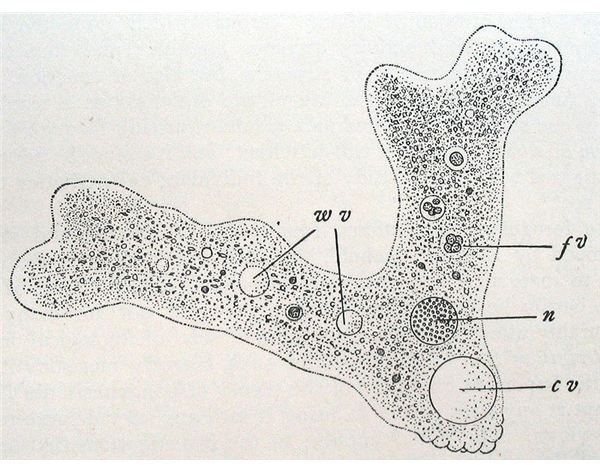What Does an Amoeba Eat? Plus other Ameoba Info and Questions
What is an Amoeba?
Amoebas are single-celled eukaryotic organisms of no distinct shape, and are consequently referred to as shape-shifters. They are transparent and each cell appears to be nothing more than a ball of cytoplasm held together by a cell wall. However, venture inside and you’ll find an organism of considerable complexity. The most obvious and apparent organelle is the nucleus. Some amoeboid species possess a single nuclei and others many more. For example Amoeba pelomyxa has hundreds of nuclei.
Other organelles include food vacuoles that store and digest food, and contractile vacuoles that are involved in osmoregulation and pump excess water out of the cell.
What Does an Amoeba Eat?

Amoebas can be found in fresh water, salt water, soil and in some animals - including humans. They feed off bacteria, algae and other protozoa. They obtain their food by phagocytosis. A large structure known as a pseudopod (a temporary extension of the cytoplasm) surrounds and captures the prey in a tiny drop of water. An opening in the cell membrane allows the water and food droplet inside where it is enclosed in a food vacuole. Some amoebas are parasites.
Entamoeba histolytica is an amoeba that can live in the human alimentary tract and can cause amoebic dysentery.
How Does an Amoeba Move?
Amoebas move by changing the shape of their body and by forming pseudopods. The word “pseudopod” comes from two Greek words - “pseudo” (false) and “pod” (foot). Some amoebas have many pseudopods - polypodial - others just have the one - monopodial.
The cytoplasm inside the amoeba is pretty clever stuff and is capable of changing its state from a fluid to a solid. The solid state is called plasmagel and the fluid state is known as plasmasol. In order to move the plasmasol flows through the centre of structure toward the front and forms a pseudopodium to propel the cell forward. When the plasmasol reaches the tip of the pseudopodia it becomes solid again.
While this is happening the plasmagel at the rear of the cell is converted to its fluid state and surges forward; thus continuous movement is achieved.
How big is an amoeba genome?
For something so small the amoeba has a large genome. The Amoeba dubia has 670 billion base pairs. The genome Amoeba proteus, has 290 billion base pairs. By comparison the human genome has a mere 2.9 billion base pairs.
Is an Amoeba an Autotroph?
Amoebas cannot make their own food and so they are heterotrophs. They gain their nutrients by engulfing prey.